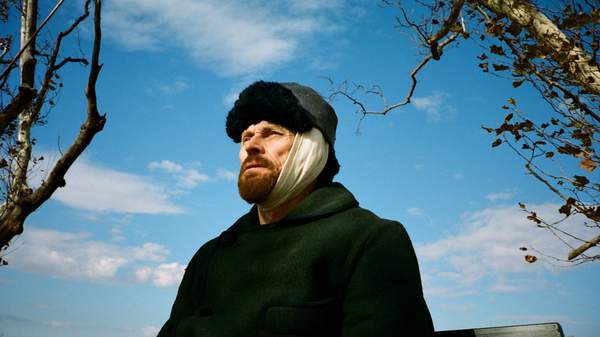Overview
An artist turned filmmaker, Julian Schnabel largely specialises in films about visionary artists, however he can't be accused of settling into a comfortable niche. Whether he's focusing on American painter Jean-Michel Basquiat in Basquiat, exploring the life of Cuban poet and playwright Reinaldo Arenas in Before Night Falls, or examining the experiences of French writer Jean-Dominique Bauby in The Diving Bell and the Butterfly, Schnabel does more than present straightforward biographical dramas. Rather, his pictures are dedicated to channelling their subject's mindsets with every stylistic touch — to steeping viewers in each real-life figure's perspective as deeply and immersively as possible. There's no formula at play, just an unflinching dedication to capturing each artist's essence. And with the writer-director turning his attention to Vincent van Gogh, At Eternity's Gate hits the mark perfectly.
To many, van Gogh's name inspires three well-known details: his Sunflowers still-life paintings, the moody blue swirls of The Starry Night and the liberation of his ear from his head by his own hand. All three rate a mention in At Eternity's Gate, though they're hardly the most crucial aspects of the film. With Willem Dafoe plays the artist with urgent, revelatory intensity (and earning a much-deserved Academy Award nomination for his troubles), Schnabel seeks to understand rather than faithfully chronicle. As written with Jean-Claude Carrière and co-editor Louise Kugelberg, his movie happily draws upon not only van Gogh's personal letters, but on fiction, myths and speculation, including about the artist's death.
A suitably post-impressionist portrait of the iconic Dutch post-impressionist, At Eternity's Gate recounts van Gogh's final years — a period of challenge, pain and immense productivity. Feeling adrift in the Parisian art scene, where galleries remain uninterested and his art-dealer brother Theo (Rupert Friend) can't sell his work, van Gogh decamps to the French town of Arles upon the advice of fellow artist Paul Gauguin (Oscar Isaac). But if van Gogh hovered on the fringes of his chosen community in the city, he's an outright pariah in his new small-town setting, with his drinking, temper-driven outbursts and psychological unravelling grating against the locals. While Theo arranges for Gaugin to join his sibling's sojourn, the solace of good company proves merely a temporary fix to van Gogh's inner woes.
It would've been a revolutionary move, but Schnabel could've trained the camera solely at Dafoe for At Eternity's Gate's entire running time, and he still would've crafted an exceptional film. There's such power to the actor's performance — the power that springs not from force, or from seeing every ounce of effort, but from so convincingly stepping into someone else's shoes. van Gogh's work has always seethed with both passion and fragility. In every stroke, even in his most striking compositions, it seems as if he's feverishly exorcising the visions that are haunting his mind. In the movie's finest accomplishment, its commanding leading man gives flesh, heart and soul to that sensation. Although Isaac is memorable as Gauguin, and both Mathieu Amalric and Mads Mikkelsen make an impression as a doctor and a priest, respectively, Dafoe conveys both the emotional delicacy and the damning turmoil that made van Gogh who he was — and made his art so astonishing.
Of course, Schnabel doesn't just train the camera at his star, and his film is all the better for it. How the filmmaker composes At Eternity's Gate's frames is as important as what's within them, with cinematographer Benoît Delhomme wielding the lens almost as if it's a paintbrush. There's rarely a still moment, with the image swirling, roaming and playing with focus in the same way that van Gogh's artwork does. The movie also borrows the artist's use of colour, particularly when gazing upon the French landscapes that he frequently committed to canvas. And yet, Schnabel never forgets that film is an audio-visual medium. His potent visuals say plenty about his complicated subject, but so does his layered soundscape. Staring into Dafoe's penetrating blue eyes, peering at every fleck of dirt and grass that marked van Gogh's life, and marvelling at the painter's pieces only feels complete when the artist's words float like the wind — and when the wind itself conjures up his deep-seated struggle.
Features
Information
When
Thursday, February 14, 2019 - Wednesday, April 10, 2019
Thursday, February 14 - Wednesday, April 10, 2019
Where
Select cinemas in SydneyVarious locations
Price
$15–25-
Event Type
